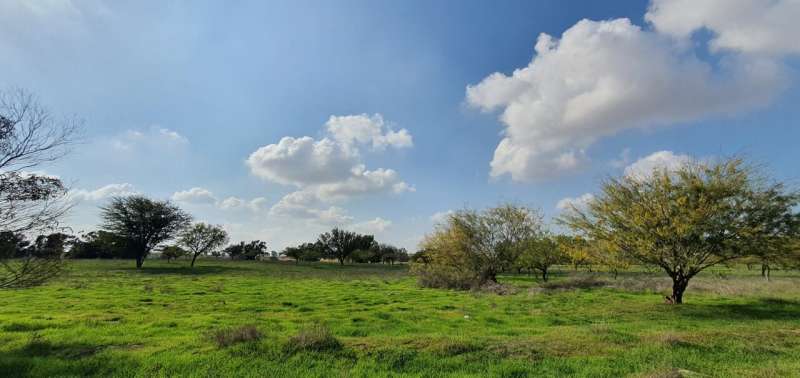This article has been reviewed according to Science X's editorial process and policies. Editors have highlighted the following attributes while ensuring the content's credibility:
fact-checked
trusted source
proofread
Ecological impact of eucalyptus trees: Balancing benefits and risks

A new study has found that Eucalyptus trees, widely planted in Israel's Western Negev, have a significant allelopathic effect, reducing herbaceous plant biomass and flowering density of red anemones, particularly in unshaded areas.
These findings suggest that while Eucalyptus trees provide certain benefits such as shading for tourists and nectar for bees, their negative impact on local plant communities and ecosystem services necessitates cautious planting, particularly in tourist areas and regions with rare species.
The Eucalyptus species showed large differences in their effect, thus, prioritizing Eucalyptus species with minimal adverse effects is recommended for future reforestation efforts.
The Western Negev region of Israel, characterized by its extensive Eucalyptus plantations, has been the subject of ongoing debate due to Eucalypti being an alien species. Eucalyptus is famous for allelopathy—the chemical inhibition of one plant species by another—which can significantly impact local vegetation.
This study, conducted in the Be'eri forest and near Kibbutz Re'im, focused on understanding these effects on herbaceous plant communities that are crucial for ecosystem services, such as grazing and cultural significance.
The study, by Yuval Neumann and Dr. Niv DeMalach from the Faculty of Agriculture, Food and Environment at the Hebrew University examined the impact of three Eucalyptus species: E. camaldulensis, E. loxophleba, and E. torquata. Key findings include:
- Herbaceous Biomass Reduction Under the Eucalypti canopy a significant reduction in herbaceous biomass was observed, even when controlling for shading.
- Flowering Density of Red Anemones: A negative impact on the flowering density of red anemones (A. coronaria) was observed.
- Ecosystem Services: Eucalypti provide numerous ecosystem service, such as s security-forestation (hiding settlements), as nectar providers, or shade providers. Their potential negative impact on ecosystem services is through reducing the
- flowering density of red anemones, which in turn are an economical ecosystem service as they attract tourism.
- Differences between the species: The study found major differences in the three Eucalyptus species' effect on herbaceous communities, with E. torquata having a negative effect on biodiversity (of up to ~90% reduction), while the other two species did not show an effect.
Given the findings, the researchers advise caution in planting certain Eucalyptus species' trees in areas intended for tourism, such as the "Darom Adom" (red south) festival, and in regions home to rare or protected species. Significant differences between Eucalyptus species were noted, with some species exhibiting minor negative effects. Therefore, the researchers recommend prioritizing species with minimal impact for reforestation efforts.
This study underscores the need for careful consideration of the ecological impacts of Eucalyptus plantations in the Western Negev. While these trees offer certain benefits, their allelopathic properties can negatively influence local plant communities and ecosystem services. Reforestation efforts should be led by data-driven decision-making, and supported by further research, to deepen our understanding.
More information: The effect of eucalyptus on the vegetation in the Western Negev - implications for restoration. magazine.isees.org.il/?p=57779
Provided by Hebrew University of Jerusalem




















